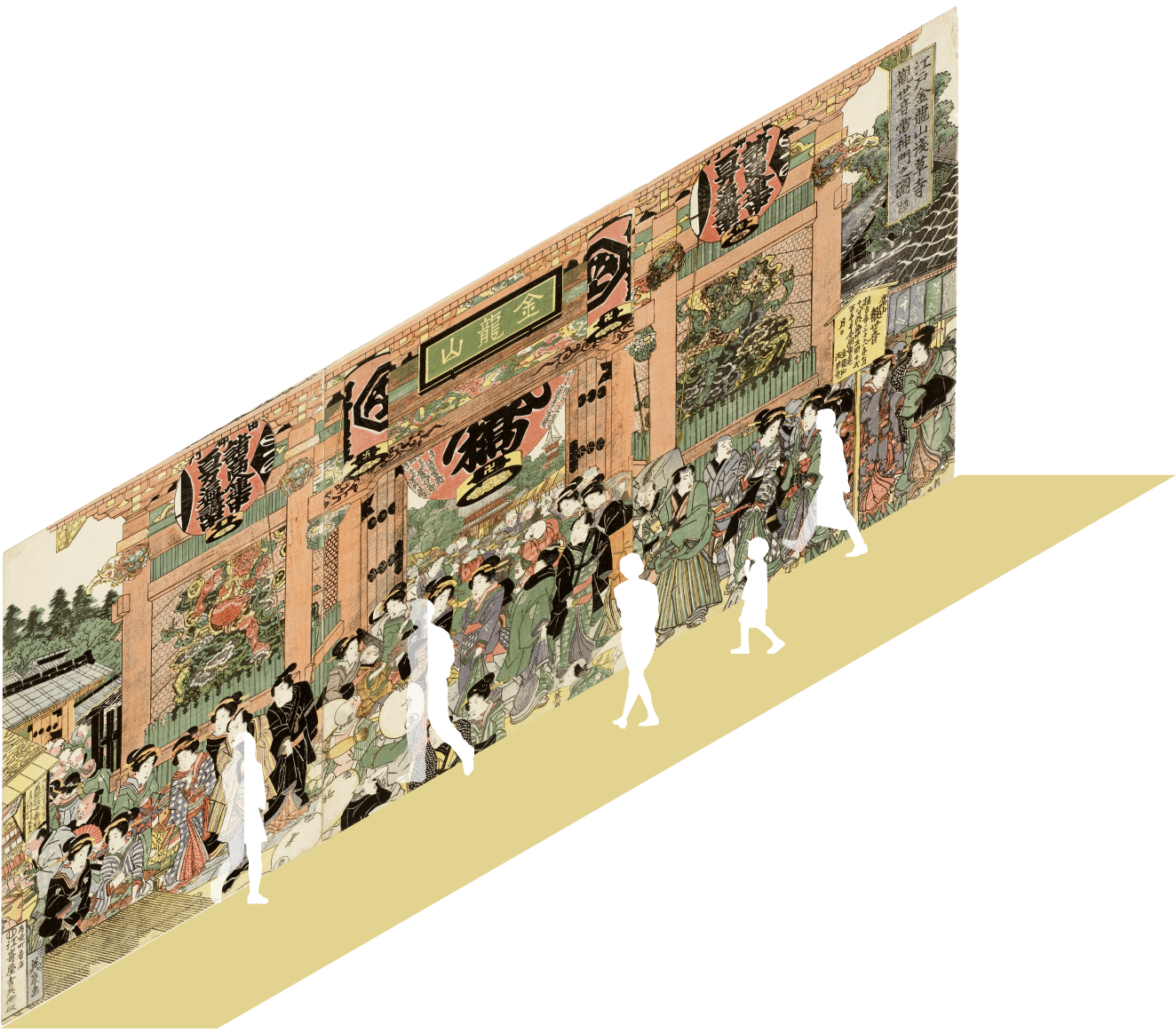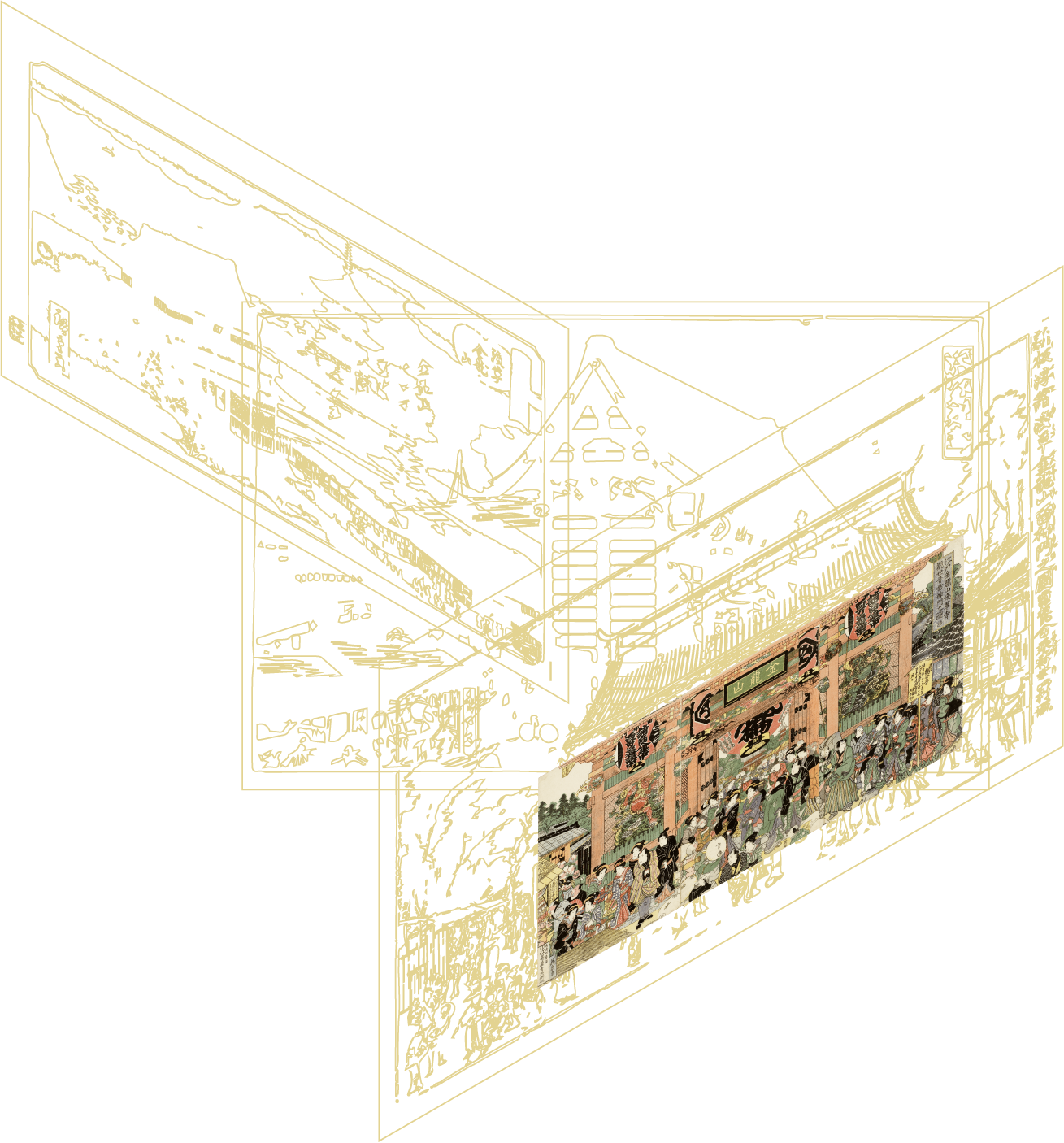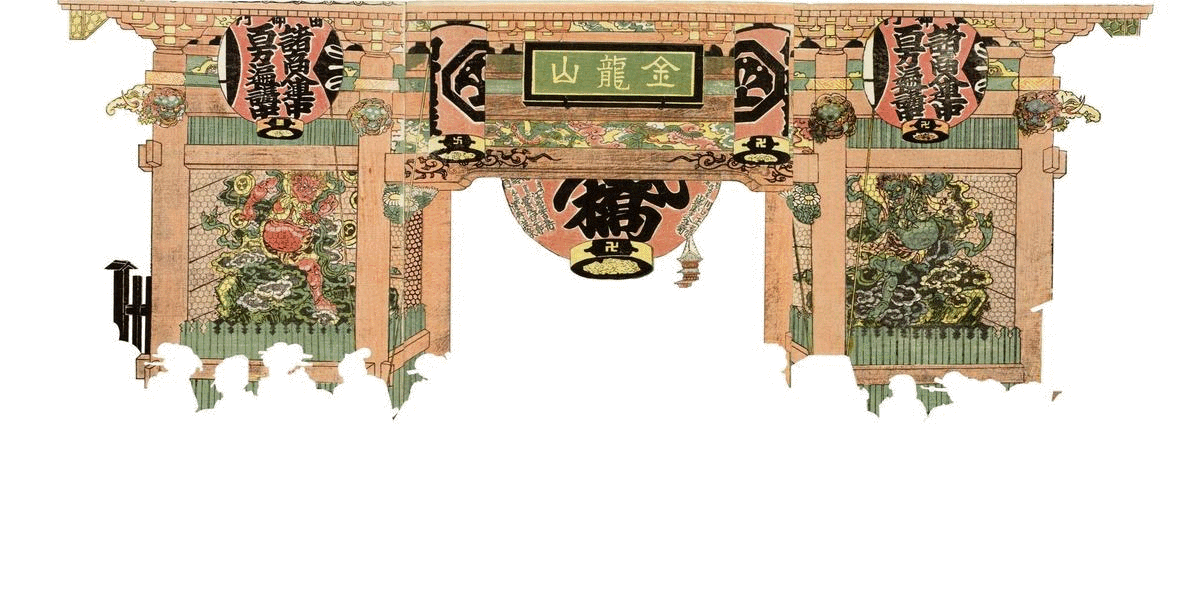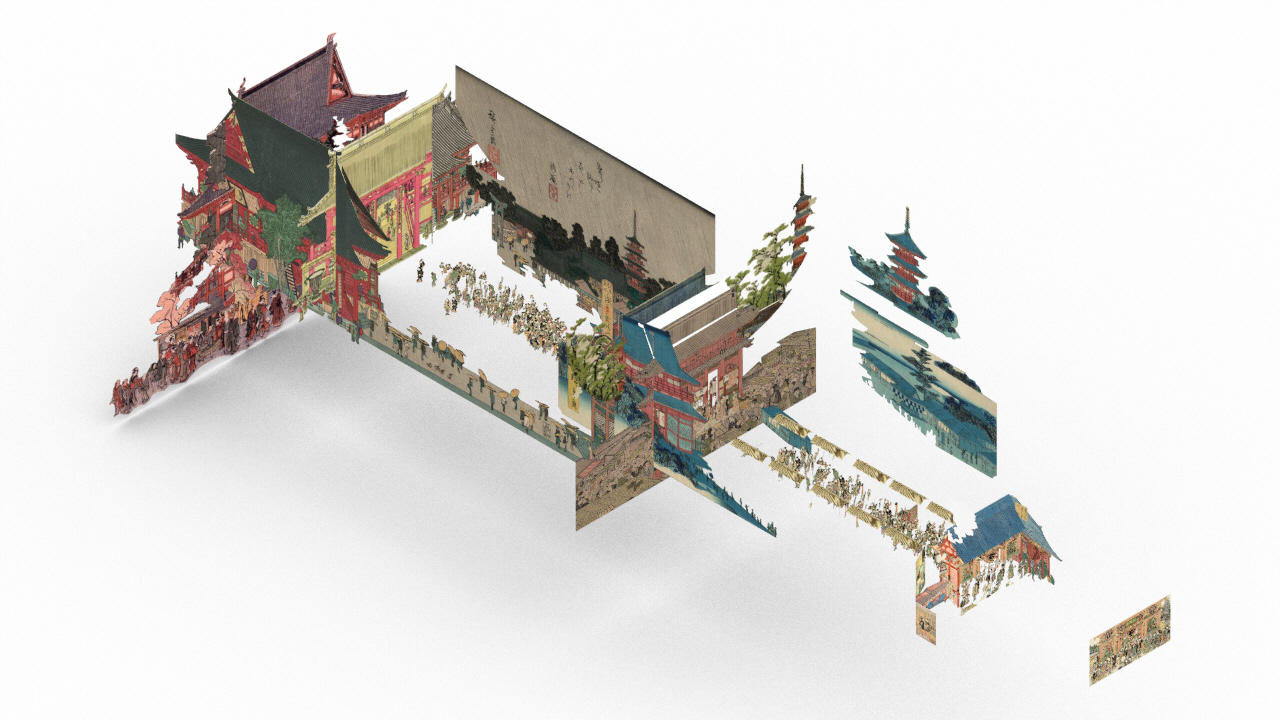What is it like to walk inside a print?
What does it mean when works of art literally become building blocks that we use to reconstruct a space and a spatial experience?
Working as a summer intern in the Asian Art Department at the RISD Museum, I encountered this woodblock print triptych by Keisai Eisen that depicts a lively scene at the entrance gate to the Kinryuzan Sensoji Temple located in Asakusa, Edo.
I was intrigued by the print’s extraordinary dynamism, conveyed through its vivid colors and intricate depiction of a diversity of social activities and people. In a seemingly shallow composition, incredible spatial depth is expressed and the viewer’s eyes travel under and past the monumental paper lantern into the distance.
The Kinryuzan Sensoji Temple was the heart of Edo culture. Dedicated to the bodhisattva Kannon, it was not only a venerable site for the Buddhist religion, but also a hub of urban life, commerce, and entertainment where different groups of people mingled. Despite the physical devastation the temple repeatedly suffered from in history, its vivacity and prosperity continued. Today, when you visit the temple in Asakusa, Tokyo, which was reconstructed in the 1960s, what awaits you is a similar scene bustling with life as is in this late-1820s print.
The Kinryuzan Sensoji Temple is also a popular subject in Japanese ukiyo-e prints. I wanted to create for the audience an experience of the site through the eyes of the artists. Along with the print from the RISD Museum collection, I collaged around 20 other woodblock prints from the Edo Period that depicted the Kinryuzan Sensoji Temple area. Piecing together the different perspectives, I constructed a 3-dimensional digital model that shows the entire sequence of spaces that one would go through to visit the temple—from the Kanzeon Raijin Gate as is shown in the print from the RISD Museum collection to Nyōmon (the second entrance gate), Nakamise-dōri (a shopping street that led to the Main Hall, Kannon Temple), a five-storied pagoda, and lastly the Main Hall, Kannon Temple.
Introducing elements of virtual reality, I was able to create an immersive experience for the viewer by allowing them to stand at certain points of the 3D model and experience the space at one-to-one scale in 360 degrees.
By scanning the QR Codes below and using a VR viewing device, you can also transport yourself to the Kinryuzan Sensoji Temple in seconds.
Let’s fly to Edo together.
Danning Niu was the 2019 Andrew W. Mellon Summer Intern in Asian Art. Danning is a senior in the Brown RISD Dual Degree program majoring in Interior Architecture and East Asian Studies.





